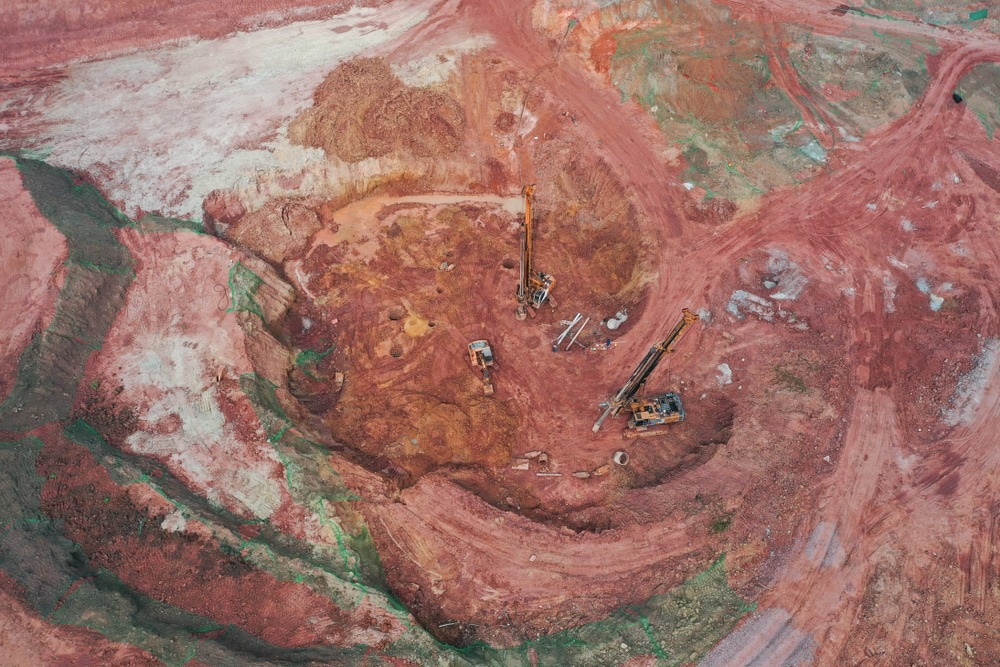Digitization and automation are becoming crucial in mining industries worldwide as mines keep getting deeper accompanied by declining grades. Moreover, mine investors have begun strongly adhering to environmental, social, and governance standards, which have increased the focus on mine safety and health issues. A logical way of improving mine safety is automated unmanned operations. Automated machinery can be used over prolonged periods compared to human workers, resulting in improved productivity and making mine staff available for other complex tasks.

Image Credit: bqmeng/Shutterstock.com
With the deepening of mines, ventilation becomes progressively challenging and costly in supporting human operators. Automation can increase the efficiency of mines by 30%, particularly in hard-rock mining. Automation can lower mining costs by about 20-40%. The operators can be kept safe from hazardous areas in a control room using remote-controlled drill rigs. This has a positive impact on the safety and health of the workers. However, underground automation is very expensive because of the lack of infrastructure supporting GPS and connectivity.
Automation in Arctic Mining
In arctic mining, various companies have implemented automation in their operations. Owing to the severe arctic climate, with reduced visibility and driving safety due to snowstorms, Boliden employed automation at the Aitik mine using semi-autonomous single-row Pit Vipers with a tele-remote to operate the fleet. The main key performance indicators returned positive results, and the operators had a positive opinion of the Pit Viper automation technology.
Following this, the other Pit Vipers were converted for remote operation while the first Pit Viper was upgraded to carry out single-row autonomous operations. The operator would initiate the process, followed by the Pit Viper drilling blast holes on its own and moving autonomously between the drill holes. Boliden observed an 80% increase in utilization and a 30% increase in productivity.
The entire process at the Aitik mine, including the pumping stations, conveyor systems, and concentrator plant is operated by ABB Group’s Extended Automation System 800xA. The concentrator consists of two ABB gearless mill drives (GMDs) powering two mills grinding the ore for copper extraction. Additionally, an ABB gas-insulated substation provides electricity to the mine from the grid with minimal space requirements and electrical losses. A power factor correction harmonics filter system enables a smooth, penalty-free operation of the GMD system without disturbing the supply network.
At the Gahcho Kue diamond mine, teams deployed by the Caterpillar Group carry out remote monitoring of the generator sets and identify issues beforehand by using predictive analytics. Automated notifications and alerts are then used to contact the on-site technicians in the event of a detected issue, who would subsequently complete the repairs in time, preventing considerable operational impacts.
Amaroq has entered a memorandum of understanding with ABD Solutions, to develop vehicle autonomy systems at the Nalunaq mine in South Greenland. The autonomous mining fleet is expected to be electrically fueled by renewable energy generated on site. The lack of toxic gases will provide added health benefits to the on-site workers. However, this would also eradicate the need for excessive ventilation, further reducing the costs. A large-scale development serving entire facilities indicates even greater cost benefits of the automated equipment than diesel machinery.
Future Scope
Pilot projects related to robotics, data mining, and computer vision are advancing, along with the assessment of utilizing airborne surveillance tools such as drones in exploration projects.
Light detection and ranging (LIDAR) technology is promising for use in autonomous vehicles with the capability of 3D mapping a mine’s landscape. This can help reduce the challenges encountered during operations in extreme environments, similar to those in the arctic regions. However, with sufficient advancements in GPS, connectivity, and software, successful integration with the required sensors and robotic components can be realized.
These technologies can withstand vibrations and severe shocks while being continuously operable in temperatures of +85 °C to -40 °C. Therefore, autonomous vehicles are being theoretically considered an alternative for all kinds of mining environments, irrespective of the dust, sand, snow, rain, cold, or heat present. The technological innovation in autonomous vehicles, with its relatively simpler movement patterns and closed system, presents itself as a basis for this technology's future.
References and Further Reading
Commodity News (2021). Automation ‘critical’ to productive mining as mines deepen, ESG concerns grow. Available at https://www.hellenicshippingnews.com/automation-critical-to-productive-mining-as-mines-deepen-esg-concerns-grow/ (Accessed on October 20, 2022)
ABB. Productivity gains at Arctic copper mine. Available at https://resources.news.e.abb.com/attachments/published/38103/sv-SE/BA5255028A02/Productivity-gains-at-Arctic-copper-mine.pdf (Accessed on October 20, 2022)
Dominic Hale (2022). Arctic automation: inside Amaroq and ABD’s arctic mining vehicles. Available at https://mine.nridigital.com/mine_oct22/arctic_mining_vehicles (Accessed on October 20, 2022)
Caterpillar (2019). Technology at an Arctic Diamond Mine. Available at https://www.caterpillar.com/en/news/caterpillarNews/customer-dealer-product/technology-at-an-arctic-diamond-mine.html (Accessed on October 20, 2022)
Epiroc (2020). Aitik – Strides to full automation. Available at https://www.epiroc.com/en-in/customer-stories/2020/aitik-automated-bit-by-bit (Accessed on October 20, 2022)
Daniel Gleeson (2018). Norilsk Nickel continues digitalization drive towards automation. Available at https://im-mining.com/2018/11/20/norilsk-nickel-continues-digitalisation-drive-towards-automation/ (Accessed on October 20, 2022)
Disclaimer: The views expressed here are those of the author expressed in their private capacity and do not necessarily represent the views of AZoM.com Limited T/A AZoNetwork the owner and operator of this website. This disclaimer forms part of the Terms and conditions of use of this website.